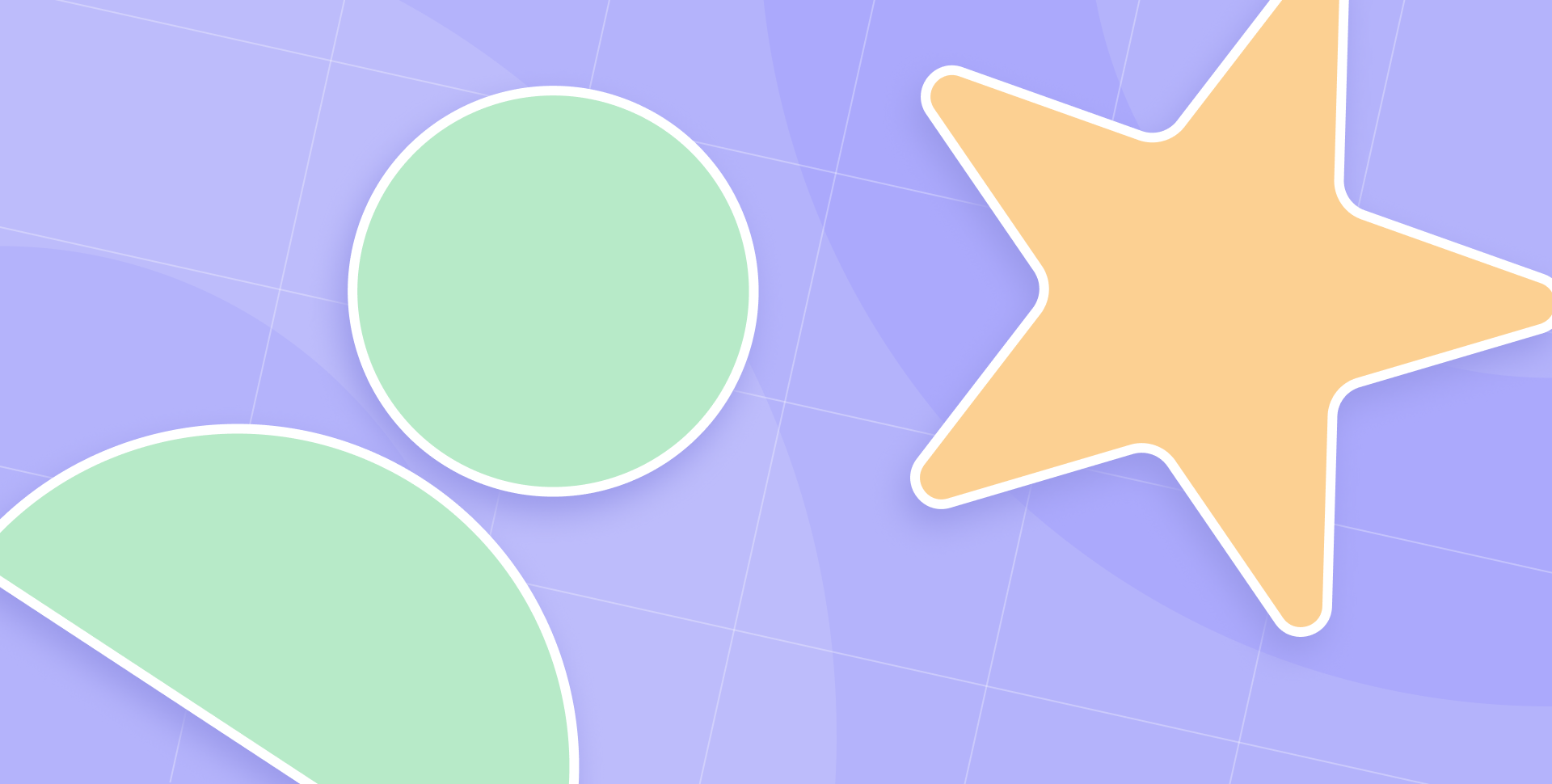Book a 30-minute demo and learn how Kula can help you hire faster and smarter with AI and automation
Slow hiring isn't just a recruiting issue—it's a business problem.
For every extra day, a key role remains unfilled; your company risks losing top candidates to competitors and thousands of dollars in revenue. A Glassdoor report shows that 52% of companies lose top talent to faster-moving competitors.
The impact goes beyond losing great hires. Slow hiring also damages employer brand perception and reduces productivity.
What makes this situation worse is the latest research surfacing the widening gap between 'easy-to-fill' and 'hard-to-fill' roles, hinting towards the growing difficulty in hiring.
In short, optimizing your hiring process is no longer optional—it’s essential.
But how do you hire faster without compromising quality? By tracking and optimizing time-to-hire metrics and using AI and automation to eliminate inefficiencies.
This article breaks down why tracking time-to-hire matters and shares 11 proven strategies to speed up recruitment—without sacrificing quality.
Why track time to hire metrics?
Time to hire measures the total time it takes to fill a vacant position, from the moment you advertise it until they accept the job offer.
Tracking this recruiting KPI gives you valuable insights into two primary aspects of hiring: recruiting efficiency and candidate experience.
If your hiring time is shorter, your recruitment process is efficient, while a longer time to hire indicates unnecessary delays that are costing you time and money.
Some of the key benefits of tracking this KPI include:
- Strategic hiring gaps fixes: When you track time-to-hire, you get a detailed overview of the time taken in each hiring stage. For example, if your hiring team delays the process at the interview stage, your next focus immediately becomes improving the interview process.
- Enhanced hiring process: In today's fast-paced world, taking too long to hire can hurt a company's ability to stay competitive. Tracking these metrics helps businesses fill roles quickly to keep up with industry changes and avoid losing top talent to faster-moving competitors.
- Saved costs: Faster hiring means fewer expenses on job ads, recruiter hours, and temporary staffing. It also prevents revenue loss from vacant roles, ensuring business operations run smoothly and efficiently.
However, the more skilled you want to hire, the more time it takes them to complete. For example, skill evaluation takes more time for upper-end technical hiring than for lower-end hiring, which is much faster.
This approach is good because in some cases a longer hiring process is necessary to make the right decision.
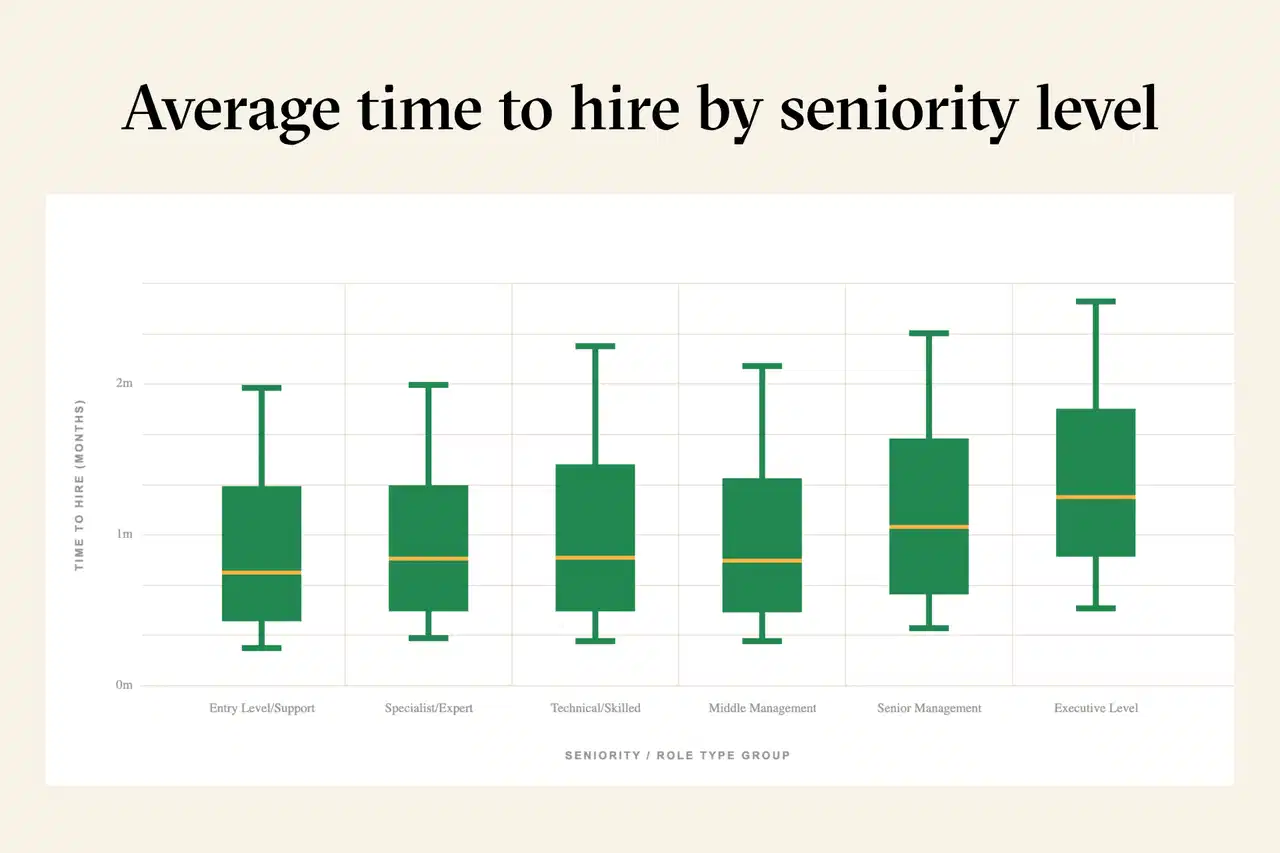
Start by focusing on optimizing the hiring process for easy-to-fill roles. In doing so, you'll inherently develop a more structured hiring approach that benefits even the more challenging, high-level hires.
How to reduce time to hire: 11 effective tips
As Jim Sykes, Global Managing Director of Client Operations at AMS, said:
"Time to hire has risen consistently for the last four years. Make no mistake, the hiring market is not going to get easier any time soon. HR and Talent leaders will need to continue to innovate and transform their strategies for acquiring, developing, and retaining talent."
Learn ahead 11 such hiring strategies to optimize your hiring process and reduce time to hire:
1. Implement an efficient Applicant Tracking System (ATS)
Common hiring challenges that lead to extended time to hire include:
- Delays in reviewing applications
- Wasting time coordinating interview schedules
- A complicated process for sending or signing offers
An Applicant Tracking System (ATS) automates these hiring stages, which helps you reduce time-to-hire without much effort.
Key benefits of an ATS include:
- Saves time by automating manual tasks like resume sorting and candidate screening
- Improves organization by keeping all candidate information centralized and easily accessible
- Enhances collaboration with automated communication between hiring managers, teams, and candidates
- Provides accurate data and insights to track time to hire and identify areas for improvement
Kula is one of the few AI-powered, all-in-one ATS solutions available.
At Kula, AI is not just for speed but for fairness and quality. Read about our CEO’s vision with AI:

Here is what recruiters will be able to do with Kula:
- Automate repetitive tasks such as resume parsing and candidate communication
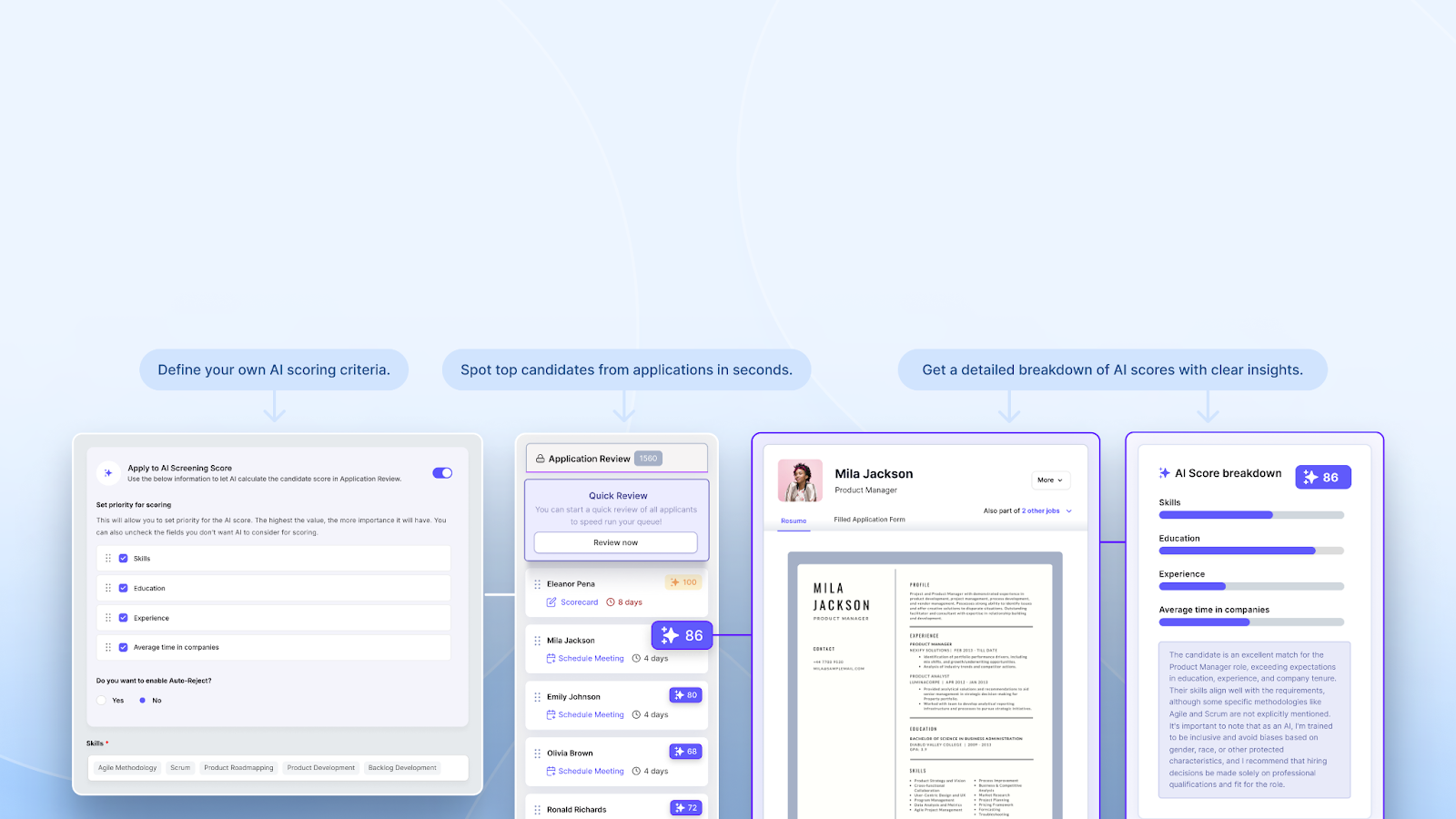
- Add AI scoring in job applications to focus on the top 5% of the talent

- Use Interview Intelligence to get instant summaries and stakeholders' feedback on candidates
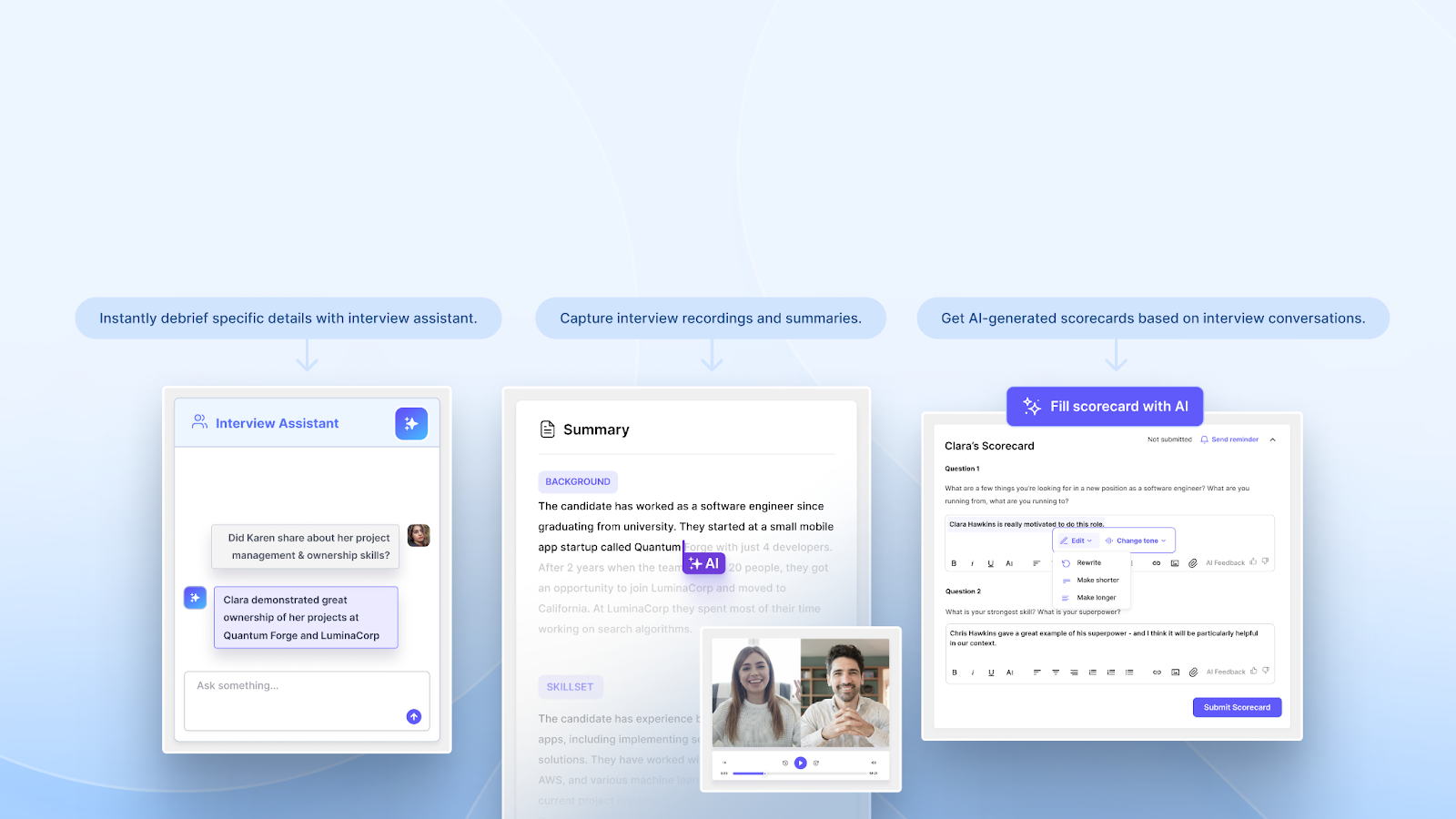
- Create brand-aligned job applications and career sites with AI in just a few minutes

- Advanced analytics that present reports for all important recruiting KPIs and metrics for making informed decisions
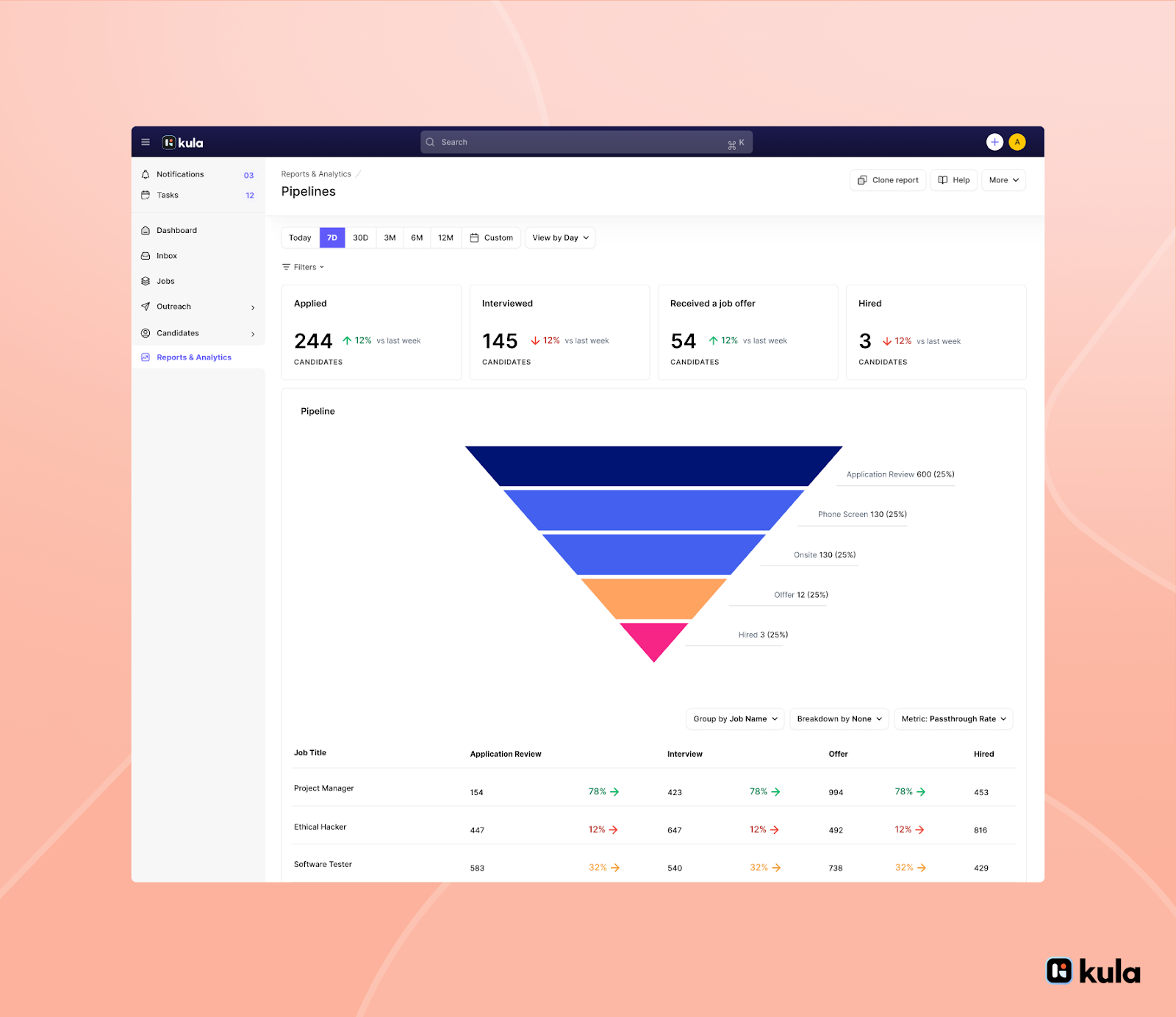
- Increase response rates from passive candidates by automating the prospecting flows
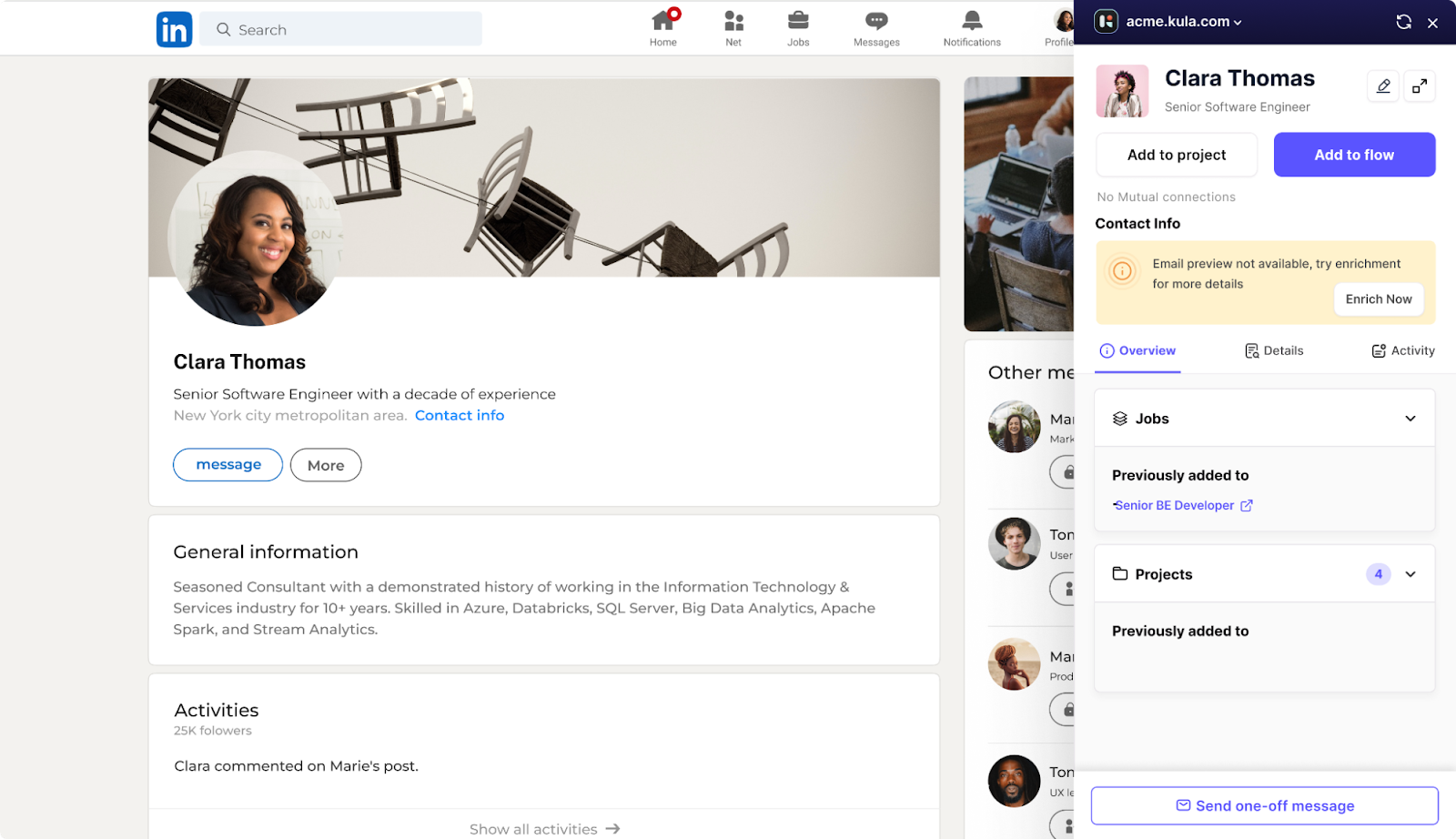
Curious if Kula is right for you? Schedule a demo tailored to your business needs, and let’s find out together.
2. Add pre-employment assessments
Pre-employment assessments (also known as pre-hire assessments) are a set of questions or assignments that must be completed as part of the candidate's job application.
Currently, 54% of organizations use pre-employment assessments, and 21% plan to expand their use within the next five years. The reason? They help:
- Identify candidates with the right skills for the role
- Save interview time by focusing on qualified candidates
- Provide data-driven insights for a fair and objective hiring process
To implement pre-employment assessments in hiring:
- Choose assessments that directly align with the required skills and competencies outlined in the job description
- Communicate to candidates the purpose and format of the evaluation so they can adequately prepare
- Set a realistic timeframe for completing the assessment to avoid discouraging qualified applicants
- Most importantly, keep the assessment relevant and concise
Although pre-employment assessments can increase the quality of hires, they can also be a barrier to candidates applying. To prevent this, make sure to:
- Create a short test
- Establish the actual importance of the test for both- the organization and the candidate
- Present it in a brand-aligned look to increase employer branding
Also, use the right ATS tool to implement these assessments as automation and AI will not negatively impact the time to fill KPI.
3. Optimize job descriptions
A clear, concise, and informative description is crucial to attracting qualified talent who fit the role well.
If you are not receiving relevant candidates' applications for your job openings, your next quick action should be to optimize your job descriptions.
To optimize job descriptions:
- Avoid technical jargon and industry-specific acronyms
- Proofread, format, and style your descriptions for easy readability
- Avoid excessive role requirements—focus on must-have skills
- Perform A/B testing to find the most effective wording and structure
Well-defined job descriptions resonate with top candidates and allow them to submit resumes and CVs tailored to expectations. This makes the initial screening process more manageable, as recruiters can quickly identify those without experience.
Also, it showcases your company culture and unique selling points that can attract top talent.
With Generative AI, you do not need to invest more time in creating the right job description. Use it to generate career sites and job descriptions and reduce time to hire.
11% of talent acquisition pros are already using GenAI for different hiring stages and are experiencing benefits such as:
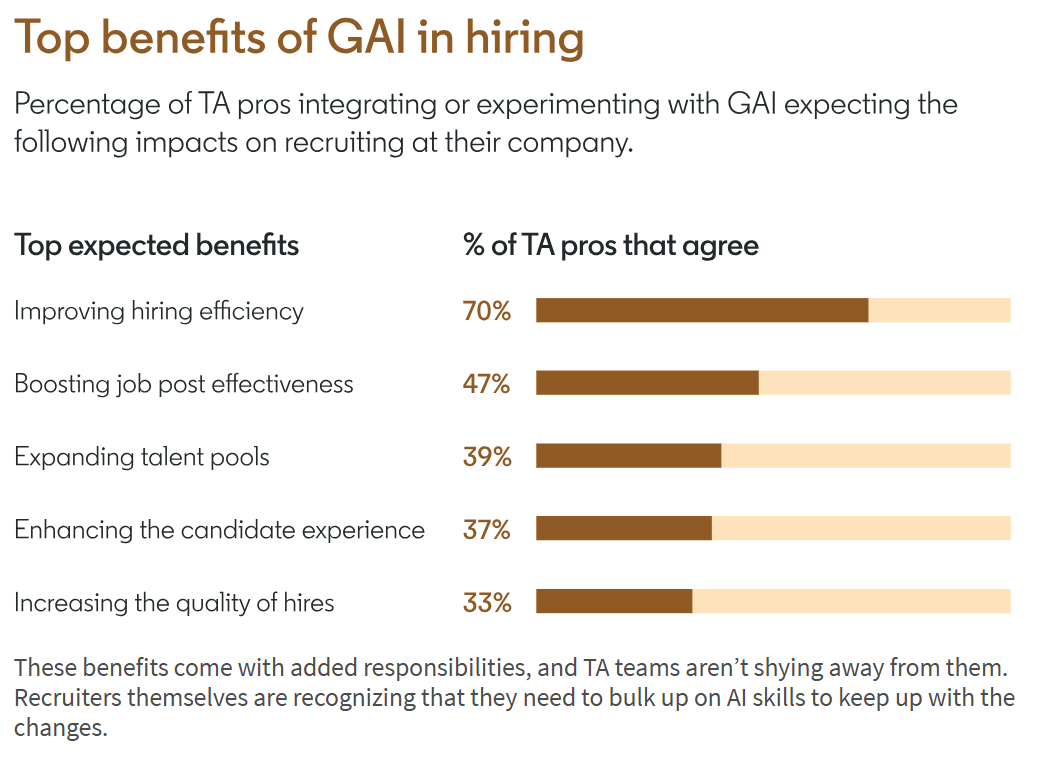
Some ATS tools (for example, Kula) support GenAI and allow you to create job applications and descriptions in minutes.

4. Leverage employee referrals
Employee referrals are a valuable source of qualified candidates. The reasons they help reduce the time include:
- Your employees understand your company culture and the ideal candidate profile. They're more likely to refer individuals who fit the role and your organization well
- Studies show that referred candidates tend to be of higher quality and perform better on the job
- Existing relationships with employee referrals can expedite the interview process and lead to faster hiring decisions
That said, 71% of U.S. companies have a referral program, but due to its lack of structure, only 4% successfully hire 30% of their employees through it.
Here is how to do it right:
- Offer rewards for successful referrals, such as bonuses or recognition programs
- Simplify the referral process with easy-to-use tools or an internal portal
- Regularly update employees about open positions and referral program benefits
- Track referral success rates to optimize the program and encourage participation
- Use the ATS tool for easy referral submission and tracking
5. Conduct structured interviews
The interview stage involves the maximum assessment steps and coordination among key stakeholders.
Structuring the whole interview process gives you faster and more efficient hiring as it:
- Reduces bias by ensuring all candidates are evaluated using the same criteria
- Make it easier to assess and compare candidates efficiently
- Gives candidates a clear understanding of the process and what to expect
Here is how to achieve a structured interview process:
- Create a set of pre-determined questions for each interview stage
- Create a set pattern of feedback collection from different key stakeholders
- Establish active communication between candidates and hiring managers
- Set a clear interview timeline to avoid delays and inform candidates about each stage
- Use a scorecard or rating system to assess each candidate’s responses and qualifications objectively
Kula Interview Intelligence feature shines here.

It lets you customize and automate each interview stage for a fully engaged and fair candidate evaluation with AI features, including:
- AI-assisted note-taking
- AI-generated summaries
- Seamless integration with Zoom, Google Meet, and MS Teams
- AI fair assessment for reducing biases
- AI-driven interview coaching for contextual feedback and post-interview tips
- Strategic hiring insights
6. Use other tools for remote hiring
We already discussed using ATS for a more effortless hiring experience, but plenty of other technologies can be used (besides using an ATS) to make remote hiring a breeze.
But why remote hiring?
- Remote hiring allows you to tap into a broader pool of qualified candidates, regardless of location
- Eliminate travel and accommodation expenses associated with traditional in-person interviews
- Video conferencing tools like those deployable from within Kula's platform UI with 1-click facilitate flexible scheduling for both candidates and interviewers
Tools you can use for remote hiring:
- Video conferencing tools such as Zoom, Microsoft Teams, Google Meet
- Online assessment platforms such as HackerRank, Codility, Criteria
- Virtual whiteboarding tools such as Miro, MURAL
- Collaboration software such as Trello, Asana, and Basecamp
- Background check services, including Checkr, HireRight
- Remote onboarding platforms such as Sapling, Click Boarding, or Enboarder
7. Offer competitive compensation packages
In the 2023 LinkedIn Learning Workplace Learning Report, the top factor employees consider when choosing a new job is compensation & benefits.
A combination of a great salary, benefits, and incentives attracts top talent faster and helps reduce time to hire. Some other benefits include:
- Reduced risk of losing employees to competitors
- Boost employee satisfaction and loyalty
- Establishes your employer's brand
To offer the best benefits and salary packages to employees, make sure to:
- Conduct market research to determine competitive salary ranges and benefits packages for each position
- Create compensation packages to meet the unique needs and preferences of your target candidates, taking into account factors such as experience, skills, and market trends
- Provide comprehensive benefits (health insurance, retirement plans, wellness programs).
- Review and adjust regularly to stay competitive in the market.
8. Build a future-proof talent pipeline
Building a talent pipeline involves proactively sourcing and engaging with potential candidates who may be suitable for future job openings within the organization.
For 48% of organizations, building a talent pipeline is their top priority for 2024. This keeps them connected with potential hires, helping them hire faster for future needs in less time.
However, 68% said they find the process challenging.
Here is how to implement talent pipeline management while keeping trends in mind:
- Identify current and potential skill gaps so that you connect with the right employees
- Build referral ecosystems to connect with top candidates
- Publish good content to engage with passive candidates long before considering a job
- Use AI and automation to identify and engage with the right employees easily
- Proactively source and engage with potential candidates through networking events, social media, and other recruitment channels
- Perform personalized communication with candidates in the talent pipeline to stay relevant
9. Implement a collaborative hiring process
An optimized hiring process includes active collaboration between the hiring team, different department heads, and the business leader. It helps define recruiting goals and makes business-aligned hiring decisions.
If implemented smartly, this comprehensive recruiting process helps reduce time to hire, as expectations are established and well-communicated.
Some other benefits of collaborative hiring include:
- Involving multiple stakeholders in the hiring process brings diverse perspectives and insights
- Makes the decision-making process faster by distributing tasks and responsibilities among team members
- Enables organizations to assess candidates from different angles, resulting in better hiring decisions and higher-quality hires.
A collaborative hiring process adds depth to your hiring process, but if done manually, it can increase the hiring time rather than reduce it.
Instead, use an ATS tool that allows organizations to create automated workflows.
With these automated workflows, companies can easily automate communication, collect stakeholder feedback, and track hiring updates.

Hence, efficient hiring with reduced time-to-hire.
10. Provide timely feedback to candidates
Good timely feedback reflects your organization's commitment to people and your belief that they are your most valuable asset. It helps create a positive candidate experience.
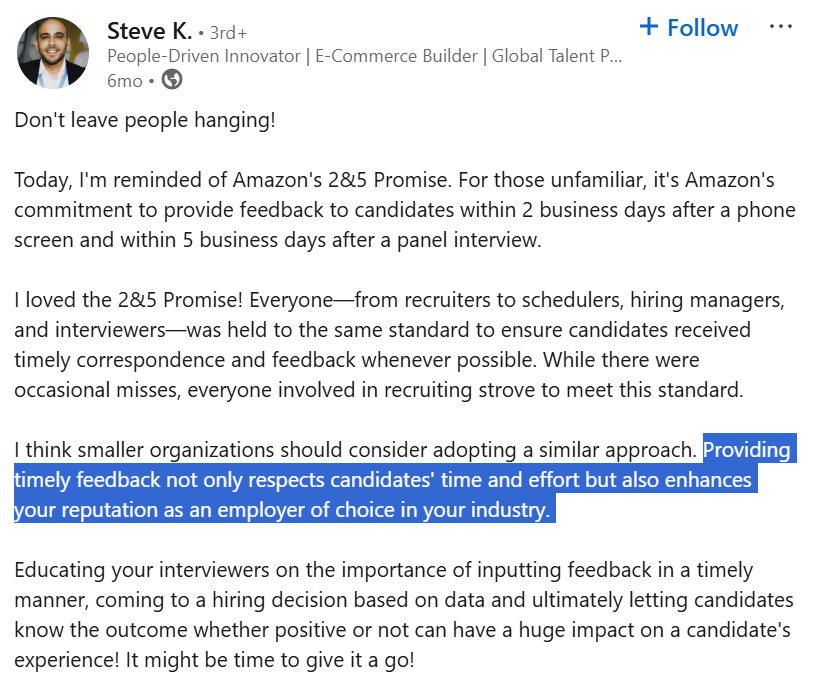
Providing good feedback also:
- Demonstrates respect for candidates' time and effort
- Allows candidates to make informed decisions about their next steps
- Enhances your employer's brand and reputation
When candidates feel satisfied with the hiring process, it not only increases the possibility of securing top candidates but also reduces the time to hire.
So, how do you create a positive candidate experience?
- Create a strict policy of sending feedback to every candidate
- Establish clear timelines for providing input at each stage
- Trigger automated emails to keep candidates in the loop
- Use personalized pre-made email templates to simplify the process
- Use interview summaries to create detailed feedback for all candidates
11. Regularly review and optimize the hiring process
There is no perfect recruitment or hiring process. Organizations must focus on establishing a timely review of the hiring process for continuous improvement.
Continuously monitoring the time taken at each hiring stage will keep you updated on which areas to focus on to reduce time to hire.
Here is how to set up reviews for an optimized hiring process:
- Analyze your current recruiting metrics
- Use an ATS tool to automate analytics and reports
- Gather feedback from candidates, recruiters, and hiring managers
Key Takeaway
Time to hire is one of the most important metrics to measure to improve your hiring process and to get the best possible talent for your company.
Kula ATS's reporting and analytics features can further enhance this process, providing actionable insights to optimize the hiring process and drive long-term success.
If you're ready to amp up your recruiting strategy and reduce the time to hire, schedule a free demo of Kula today and see how we can transform your hiring process!




















